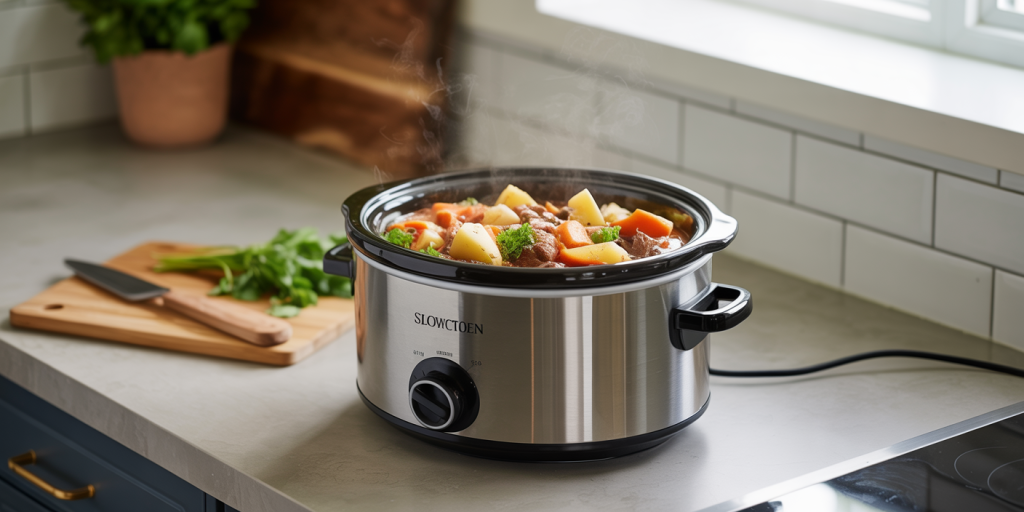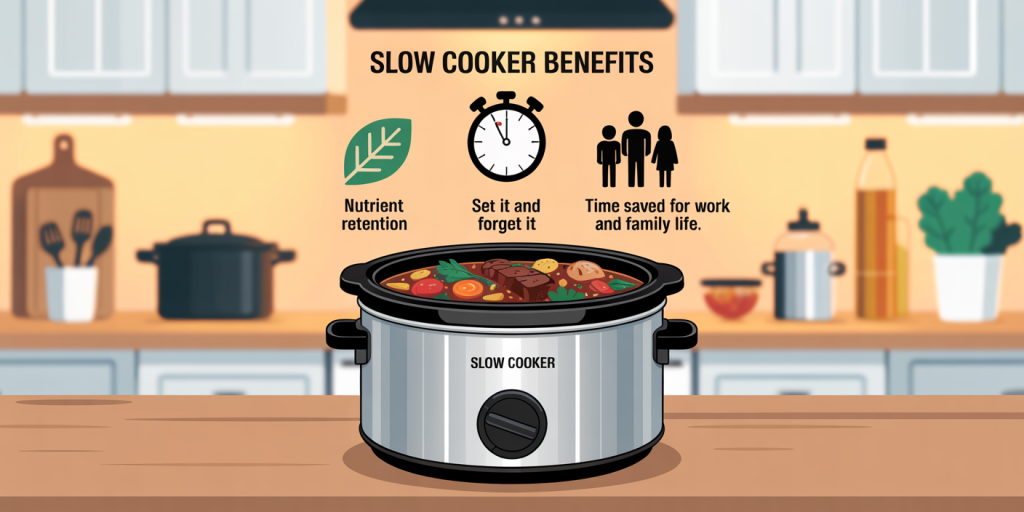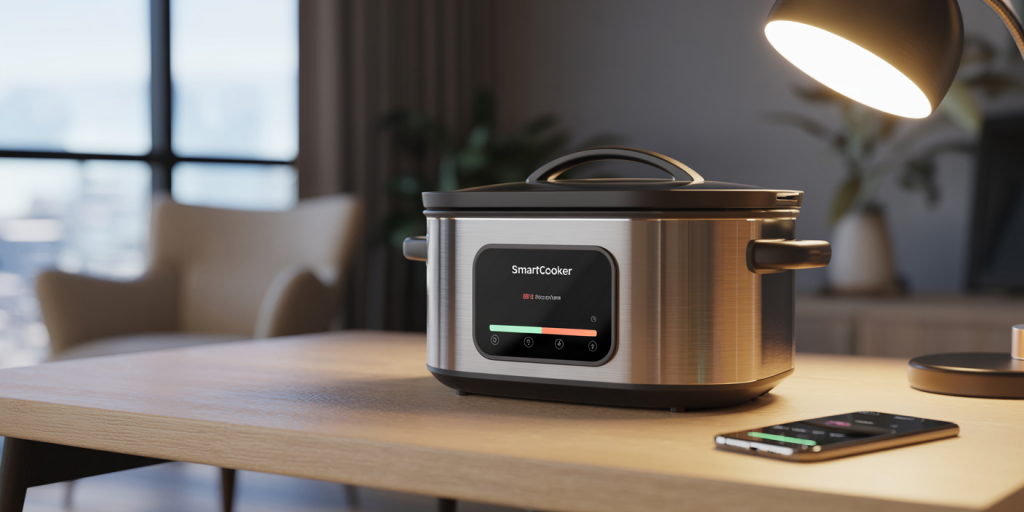In today’s fast-paced world, balancing work and home life can often feel like an impossible challenge, especially when it comes to preparing nutritious meals. The slow cooker, also known as a crockpot, provides a practical solution that allows individuals to cook delicious dishes with minimal hands-on time, freeing up precious hours for work, family, or relaxation. Leveraging the power of slow cooking, one can prepare hearty, flavorful meals in the background—a convenience particularly valued by busy professionals and parents.

Studies show that meal planning and preparation significantly improve diet quality and reduce reliance on fast food. According to a survey conducted by the American Heart Association in 2022, individuals who meal prepped during the week were 30% more likely to consume a balanced diet, which contributes to overall improved health outcomes. Slow cooker recipes align perfectly with these goals, offering a method to produce home-cooked meals with minimal daily effort.

The Benefits of Slow Cooking for Busy Professionals
Slow cookers operate by gently cooking food over several hours at low temperatures, allowing flavors to meld and ingredients to tenderize. Unlike traditional cooking methods, which require constant attention, slow cooking permits a “set it and forget it” approach that fits well into a busy schedule. For persons working a typical 9-to-5 job, this means the ability to prepare meals in the morning before leaving the house and returning to a ready-to-eat dinner.
Beyond convenience, slow cooking provides significant nutritional advantages. By cooking food slowly, nutrients are retained better than in high-heat methods such as frying or grilling. In fact, research published in the *Journal of Food Science* (2021) highlights that slow cooking can preserve up to 80% of vitamin content in certain vegetables, compared to only 50% retention with boiling or microwaving. Additionally, because the slow cooker allows for the use of whole, fresh ingredients without additives, meals tend to be healthier and lower in sodium than many prepackaged or takeout alternatives.

An example of practical use can be seen in corporate employees who use slow cooker recipes to manage their dietary goals. Jane, a marketing executive from Boston, credits her use of slow cooker stews for helping her maintain a balanced diet despite long working hours. She prepares ingredients the night before and starts the cooking in the morning, freeing up post-work time for exercise and family.
Top Slow Cooker Recipes Perfect for Cooking While You Work
Choosing recipes that lend themselves well to slow cooking is essential to maximize results. Here are some popular, easy-to-prepare options that can be assembled quickly in the morning and left to cook during work hours:
1. Slow Cooker Beef Stew A timeless classic, beef stew combines chunks of beef, potatoes, carrots, onions, and celery simmered in a savory broth. This recipe requires minimal prep—simply chop ingredients, season, and add liquids. Cooking for 8 hours on low yields tender beef infused with rich flavors, perfect for a nourishing dinner.
2. Pulled Chicken Tacos Using chicken breasts or thighs, slow cookers achieve succulent, shreddable meat that serves as a base for tacos. Add taco seasoning, salsa, and a little broth in the morning, then cook for 6-7 hours on low. Upon return, shred the chicken and serve with tortillas and fresh toppings like avocado and cilantro.
3. Vegetarian Chili Ideal for plant-based eaters, slow cooker chili blends beans, vegetables, tomatoes, and spices to create a filling, high-protein meal. This dish requires no soaking of beans if using canned ingredients, making it quick to assemble before work. Cook for 7-8 hours on low for the best melding of flavors.
Each of these recipes can be adjusted for portion size and spice preferences, showcasing the slow cooker’s versatility. Frozen vegetables or pre-chopped items can reduce morning prep time further, enhancing convenience.
How to Optimize Slow Cooker Use for Maximum Efficiency and Flavor
To achieve the best results with slow cooker meals, it is important to understand cooking times, layering techniques, and ingredient choices. Slow cookers typically have two or three heat settings: low, high, and sometimes warm. High settings cook food faster, usually 3-4 hours, while low settings allow for 6-10 hours of cooking that enhances flavors and texture.
Consider the following guidelines to improve dish quality and workflow efficiency: Layering ingredients: Dense, hard vegetables like potatoes and carrots should be placed at the bottom of the slow cooker, closest to the heat source. Meats and delicate vegetables go on top, ensuring even cooking. Liquid quantity: Slow cookers do not allow much evaporation, so recipes often call for less liquid than stovetop methods. Adjust broth or water quantities to avoid watery meals. Prepping the night before: Some prefer to assemble ingredients the night before and refrigerate the slow cooker pot, enabling quicker morning setup.
In a comparative context, the table below summarizes cooking times and texture outcomes for common slow cooker ingredients:
| Ingredient | Average Cooking Time (Low) | Texture Result | Notes |
|---|---|---|---|
| Beef Chunks | 8-10 hours | Tender, shredable | Best browned before slow cooking |
| Chickpeas | 6-8 hours | Firm but cooked | Pre-soaking recommended for dried beans |
| Potatoes | 6-7 hours | Soft but intact | Use waxy potatoes for firm texture |
| Leafy Greens | 1-2 hours | Wilted | Add in last hour to avoid overcooking |
This knowledge helps turn a morning rushed routine into a predictable culinary success, delivering high-quality meals without daily stress.
Real-Life Case Studies: Slow Cooking Success Stories
Across various demographics, slow cookers have revolutionized meal preparation for many users. Take Mark, a software developer who often puts in 12-hour workdays. He utilizes a slow cooker daily to manage his nutrition while balancing his demanding schedule. Mark’s go-to recipe is a modified lentil soup that includes lentils, diced tomatoes, carrots, onions, and curry spices, simmered for 8 hours. He notes that this “one-pot comfort meal” has boosted his energy levels and lowered his food expenses since purchasing the slow cooker.
In educational settings, slow cookers are gaining recognition as teaching tools in nutrition and home economics classes. According to a 2023 report from the National Home Economics Association, student engagement increases by 25% when lessons incorporate slow cooking, as students can see the results of their efforts without complex kitchen techniques or risk of burns.
Moreover, companies supporting remote work have begun offering slow cooker recipes in employee wellness programs to encourage healthier lifestyles. For example, a tech firm in Seattle reported a 15% decrease in employee sick days after initiating a “Slow Cooker Challenge,” wherein participants share recipes and meal photos during the workweek.
Enhancing Slow Cooker Meals with Technology and Smart Devices
The home appliance industry has innovated to make slow cookers even more user-friendly and integrated into modern lifestyles. Wi-Fi enabled slow cookers with smartphone apps allow users to monitor and control cooking remotely, ensuring that food is perfectly timed to coincide with their workday end.
Smart slow cookers provide notifications, adjust cooking temperatures automatically, and even store favorite recipes accessible via voice commands or touch screens. This integration helps reduce food waste and improves meal consistency by providing reminders and timed adjustments tailored to different recipes.
A recent survey by Consumer Reports (2023) found that 40% of slow cooker owners were interested in purchasing a smart slow cooker within the next year, citing convenience and flexibility as key motivators.
As remote work becomes the norm for many, these technological advancements promote healthier eating habits by removing barriers to home cooking, making it easier than ever to prepare nourishing meals in tandem with a busy professional life.
Slow Cookers and the Future of Work-Life Balance Nutrition
Looking ahead, the slow cooker’s role in daily meal preparation is poised to expand in response to evolving work patterns and dietary trends. As more individuals juggle flexible hours, remote work, and increased household responsibilities, the demand for hands-off cooking solutions grows.
Emerging trends suggest that slow cookers will increasingly incorporate multifunction capabilities, such as pressure cooking or air frying, to provide even greater versatility. Innovations in plant-based and allergy-friendly recipe development also mean slow cookers will cater to a broader range of dietary needs, helping combat chronic diseases linked to poor diet.
Furthermore, as sustainability becomes a central focus for consumers, slow cookers contribute by enabling waste reduction through batch cooking and repurposing leftover ingredients efficiently. This aligns with broader environmental objectives—slow cooking meals generally consume less energy compared to traditional ovens or stovetops, according to the U.S. Department of Energy.
In summary, slow cookers present an effective strategy for busy individuals seeking to nourish themselves without sacrificing productivity or quality of life. Through practical recipes, optimized use, and tech integration, slow cookers embody a culinary solution aligned with contemporary work-life demands, ensuring that wholesome meals can be enjoyed even amidst the busiest schedules.

Deixe um comentário